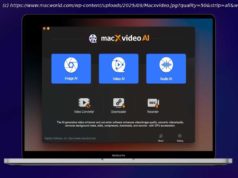The Amazon Kindle Voyage is hands down the best ebook reader available, though most people will still be served just fine by the Kindle Paperwhite.
Amazon’s various Kindles have long been the most popular ebook readers on the market, but that doesn’t mean they have always been the best from a technology perspective. Barnes & Noble beat Amazon to the punch with a front light, and Kobo eclipsed the company in screen resolution. The Kindle Voyage changes that. It has a lovely, thin design, with an incredibly sharp display and a useful adaptive front light, not to mention Amazon’s excellent ebook store. That said, I’m still not sure this is enough to warrant the $199.99 price tag when you can pick up our Editors’ Choice, the Kindle Paperwhite, for nearly half that amount.
At a glance, the Voyage doesn’t look all that different from the Paperwhite or the standard-issue Kindle, in the sense that all three share the same general size and form factor. Look closer, though, and lots of important changes emerge. The Voyage measures 6.4 by 4.5 by 0.30 inches (HWD) and weighs 6.3 ounces (or 6.6 ounces for the 3G model) , making it thinner and lighter than the Paperwhite (6.7 by 4.6 by 0.4 inches and 7.2 ounces for the 3G model) . There’s less bezel all around, and the screen has been changed from plastic to glass, making the front of the reader completely flush, rather than slightly dipped like on the other models.
The display uses scratch-resistant glass, and has been micro-etched to diffuse light, so you can read outside without any glare. The etching pattern supposedly makes the glass feel more like paper, but I think you get a better sense of this using the Kindle Paperwhite or base Kindle.
The Voyage’s display has 300 pixels per inch, which looks absolutely fantastic. Text is incredibly sharp, no matter the font size, and images look great, so comics really pop (though keep in mind you’re still working with a black-and-white E Ink screen) . The Paperwhite matches the Voyage in resolution, but lacks an adaptive backlight (which I’ll get to in a moment) . The Kindle Oasis, meanwhile, gets even brighter and has the best screen overall, but also costs $100 more than the Voyage.
The Voyage’s front light is adaptive, so if you select the Auto Brightness setting, it will automatically adjust based on the light around you. I love this feature. I’ve been using the first-generation Paperwhite since it came out, and I mostly tend to read on the subway and in coffee shops, which have vastly different lighting scenarios. I rarely adjust the lighting on my Paperwhite to compensate for this, and I didn’t realize what a difference it makes until I started using the Voyage. No matter where you use it, the lighting is pretty much perfect.
Another cool feature is that Amazon claims the brightness is tuned to match the way the eye responds to darkness. So if you’re reading in the dark, you’ll need a brighter light at first than you will after reading for 30 minutes, so the light will slowly turn down over time. I’m slightly concerned that constantly using a light sensor will impact battery life, but then again, you might ultimately wind up using less lighting.
Aside from the glass front panel, the Voyage is made of solid magnesium, with a soft-touch finish reminiscent of the Paperwhite, which gives it a premium, classy feel (though it isn’t waterproof like the Kobo Aura H2O) . The power port is still on the bottom, but I’m not too fond of the decision to move the Power button to the back of the reader. It’s hard to find, and it likely renders any existing case you were hoping to reuse incompatible.
If you’re a real Kindle diehard, and haven’t upgraded to a touch-screen model for lack of physical Page buttons, rejoice. The Voyage features PagePress, which is basically Amazon’s fancy name for Page buttons on either side of the display. I’ll focus on this feature more in the Reading section.
The Voyage comes with a black USB cable, but no AC adapter. Amazon claims up to six weeks of battery life based on half an hour of reading per day with wireless off and the light set to 10. That’s two weeks more than the Kindle and two weeks less than the Paperwhite, all of which have plenty of time for the average reader.
The Voyage hooks into 802.11b/g/n networks, and a 3G cellular option is still available for an additional $70 extra. It comes with 4GB of storage—the same as the other two Kindles now—which should be good for over 2,000 books. Amazon also stores your purchases in the cloud, so you can retrieve content whenever you’d like, and view it on other devices. Unfortunately, even on the Voyage there’s no memory card slot, so there’s no way to expand storage. It also makes it a bit more challenging to sideload additional files.
For file support, the Voyage can handle Amazon’s own Kindle format (AZW and AZW3) , along with DOC, DOCX, HTML, MOBI, PDF, and TXT files. There’s still no support for ePub files, which could make it difficult to borrow books from public libraries (though Prime users can borrow certain books for free from Amazon) .
If you already own a Paperwhite or have used another Kindle, you’ll be familiar with the interface on the Voyage. It’s touch-based, with a row of icons at the top of the screen for Back, Cart, Home, Goodreads, Menu, and Search. The interface displays the covers of six books per page, and you can choose to view all of your books in the cloud or just the ones on your device.
If you tap anywhere near the top inch of the screen, you’ll bring up the Menu bar, which has the same controls as you’ll find on the home screen, along with options to adjust the font, go to a specific page, bring up X-Ray for more information on a topic, share to Facebook or Twitter, or bookmark pages. The bottom of the page shows you how much reading you have left in the book by percentage, as well as your reading progress in the form of your location or page in the book, or your time left in a chapter or the rest of the book.
You simply tap on a book to start reading. This is where things get slightly different from the other two Kindles. To turn a page, you can tap on the left or right hand side of the display to flip backwards or forwards. But you can also use one of the new PagePress buttons on either side of the display. Actually, button isn’t really the right word. Essentially, PagePress is a pressure-sensitive sensor that sits directly underneath the bezel. Page forward sensors are marked by a 1.2-inch vertical gray strip, roughly at the spot your thumb sits when holding a book. Page back sensors are small gray dots located about an inch above.
All you have to do is rest your finger on the sensor and press it lightly, and you’ll be able to flip to the next page or turn back. Amazon claims you can do this without lifting a finger, but that’s assuming your finger lies on the sensor the entire time you’re reading. The not-quite buttons deliver a satisfying response thanks to some very subtle, quiet haptic feedback. I was afraid to trigger one accidentally, but I didn’t manage to do so after a few days of reading.






